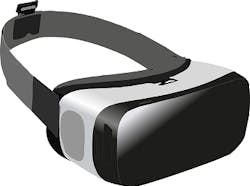VIDEO: Virtual reality tech used to demonstrate flood protection project
DUMFRIES, Scotland – Virtual reality technology is being adapted to show a £20 million flood prevention project to local residents and stakeholders.
As part of its efforts to prevent flooding of the River Nith at Whitesands in Dumfries, Scotland, consultancy Mouchel is using virtual reality headsets to explain to residents how their designs will protect the town from flooding and regenerate the riverside.
The virtual reality headsets allowed the local community to experience a “live” preview of Dumfries and Galloway Council’s £20 million scheme.
While wearing the headsets residents can see and “walk through” the design in 3D, including walking along new the embankment pathways. A 3D model flythrough takes the viewer from Greensands, down Whitesands to St Michael’s Bridge and on through Dock Park.
A 3D model of the existing environment and proposed flood defence and landscaping was developed using airborne topographic LIDAR data, ground survey data, CAD plans and photography.
Materials were applied to the model which was then populated with street furniture, people, animals and vehicles.
Image rendering software was configured to render a 3D stereoscopic 360 degree panorama for each of the locations. These images were installed in the VR headsets and presented in an automated slideshow. At each location the user could look around in all directions using normal head movement to view the proposed design.
Whitesands is an area that regularly suffers from flooding, and the scheme is approaching the significant Flood Protection Order publication milestone.
If it is approved, a funding application to the Scottish Government will be made and then detail design will commence if funding is secured.
Paul Swift, flooding and drainage technical director at Mouchel, said: “Using virtual reality has made a real difference in giving the public an opportunity to understand how their local area is going to change. It’s an immersive experience that provides the truest possible reflection of what we have designed. Weare now increasingly moving away from static drawings and helping bring the proposals to life. It’s a really exciting time and we are already looking at where else we can use this cutting edge technology to benefit clients and their schemes.”
###
Read more
Virtual reality Oculus headset helps self-sufficient WWTP save £2m in design costs
Can Microsoft Hololens augmented reality technology help improve water infrastructure?
